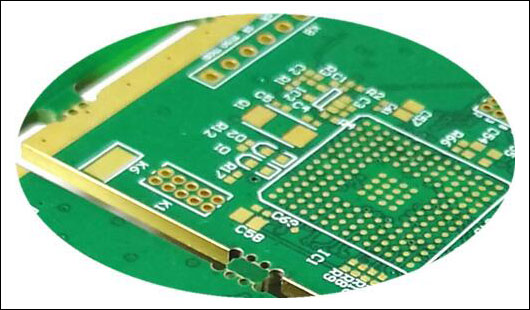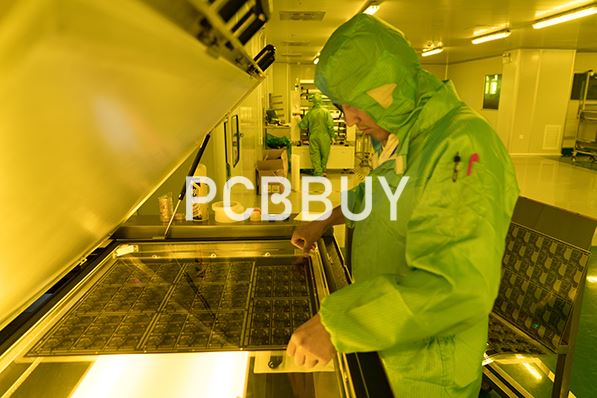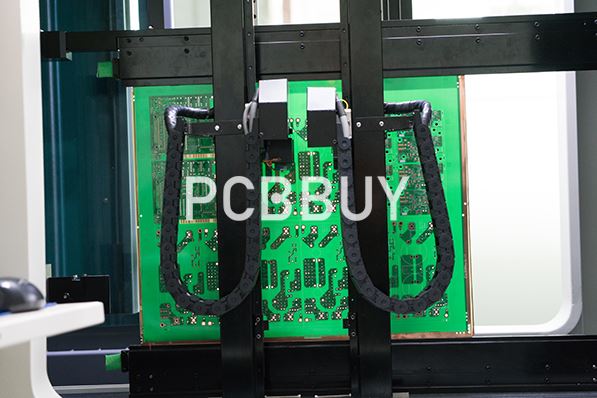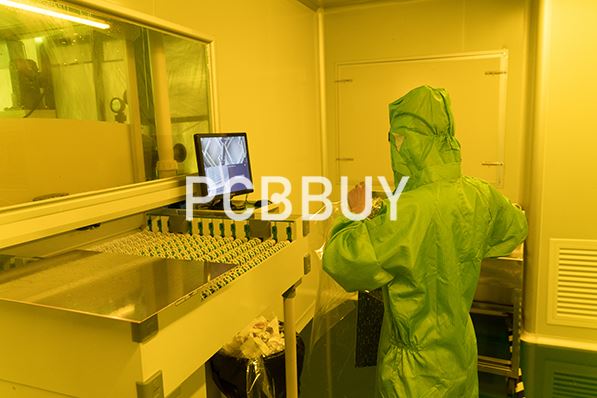PCB plating
By:PCBBUY 04/29/2021 17:44

Plating on a PCB refers to the electrochemical process by which a metal is deposited onto the surface of the circuit board, and inside the plated through-holes. The most common plated metal in PCB fabrication is copper. Copper plating serves two purposes, it increases the copper thickness of the surface pads and conductors as well as providing a robust copper connection from layer to layer through the plated through-holes.

The PCB construction process is the implementation of a well-defined paradigm wherein each step has its specific time or place to be performed. In order to understand this ordering of operations, it is important to know how each step is completed and its overall importance for your board development. The plating of your board’s surface traces and vias is an example of a situation where an understanding of its purpose enables you to make decisions that aid your contract manufacturer in building the best board for your design. Before discussing the surface PCB plating process options available to you, let’s clearly define what PCB plating is.
What are the PCB plating materials?
Via Plating
Via plating has only one material known to everyone which is copper.
Surface finishing
There are 4 materials in surface finishing which are Gold, Nickel, Tin, and Silver.
The type of PCB surface finish materials you use matters a lot. It’s because there are loads of merits and demerits for each material. So, you need to check them out and weigh your options.
Generally, you need also to consider the various types of PCB finishes you use for your PCB fabrication. So, it would help if you chose them based on their various features. That’s why we’d be talking about the different PCB finishes type in the next section.

What is the PCB plating process?
As we have seen, printed circuit boards are fabricated with copper features for electrical connectivity. Although the traces and area fills will usually be covered and protected with a solder mask, the pads and holes must be left out in the open for soldering. This exposure will pose a problem because copper left unprotected for any length of time will begin to oxidize and deteriorate, making the circuit board unusable. For this reason, a surface finish is applied or plated onto the exposed copper for its protection.
Different types of surface finishes can be used on a circuit board depending on what kind of protection the board needs:
HASL
Up until recently, HASL (Hot Air Solder Leveling) has been the most widely used surface finish in the industry. The circuit board would be dipped into a molten pool of solder and then run through hot blasts of air to remove the excess. HASL is a low-cost operation available almost anywhere. It has a long shelf life and is easy to use. The downside of HASL is that it leaves uneven surfaces that can cause solder bridging and are not detailed enough for fine pitch components.
ENIG
ENIG (Electroless Nickel Immersion Gold) has become one of the most popular surface finishes currently being applied to circuit boards. It is composed of two layers of metal coatings, with the first being a layer of nickel that is chemically plated to the board. The nickel provides a barrier of protection for the copper and then, in turn, is protected from oxidation by a thin layer of gold. ENIG has excellent surface planarity making it ideal for soldering fine pitch components. It complies with the Restriction of Hazardous Substances requirements and is durable with a long shelf life. On the other hand, it is more expensive than other finishes, such as HASL.

Immersion AG
This finish is often used in high-speed circuit boards as the silver has low losses in high-frequency applications. Immersion silver is deposited onto the copper using a chemical process and has excellent surface planarity for fine pitch parts’ solderability. Immersion silver is also RoHS compliant. The downside is that this finish is sensitive to contaminants in the air or on the board and must be kept in protective packaging to prevent it from becoming tarnished. Even with special packaging, its shelf life is roughly 12 months and must be used quickly after air exposure.
Electrodes
This process, which does not require electricity, may be used with immersion to create a metallic barrier. The process uses a catalyst to dissolve a copper rod. The copper is then distributed on the surface.
Organic
Similar to immersion, this process is considered eco-friendly, since no metal-to-metal contact is necessary. However, the shelf-life is short; therefore, good PCB storage guidelines would need to be in place.
There are many other types of surface finishes in the PCB plating process, including; lead-free HASL, immersion tin, organic solderability preservative, and electroless nickel electroless palladium immersion gold, and hard gold. While these all have their uses, HASL, ENIG, and immersion silver are the most commonly used surface finishes for circuit boards.
Industry Category











